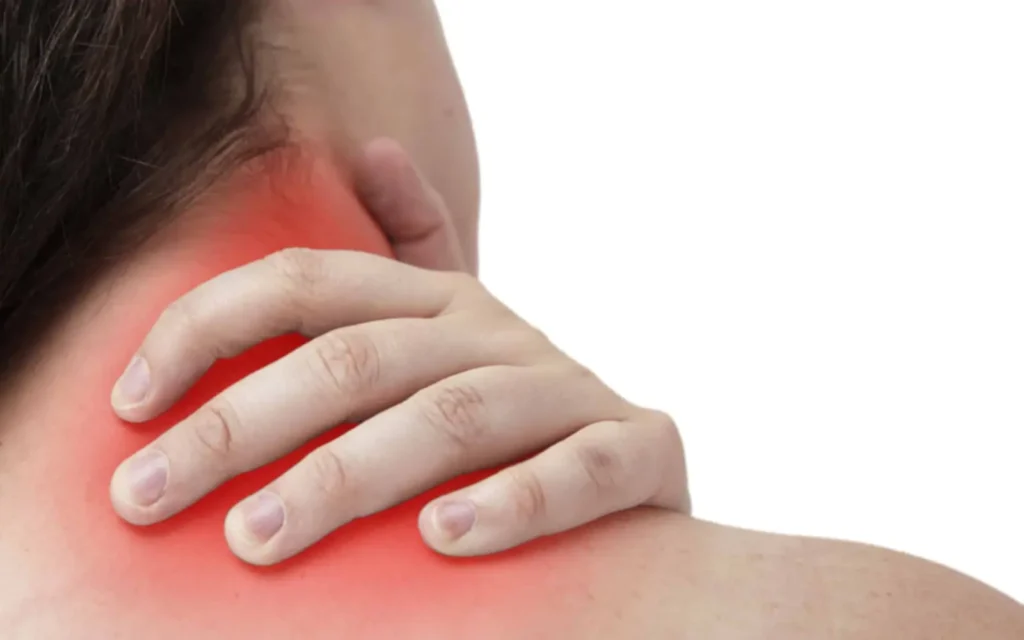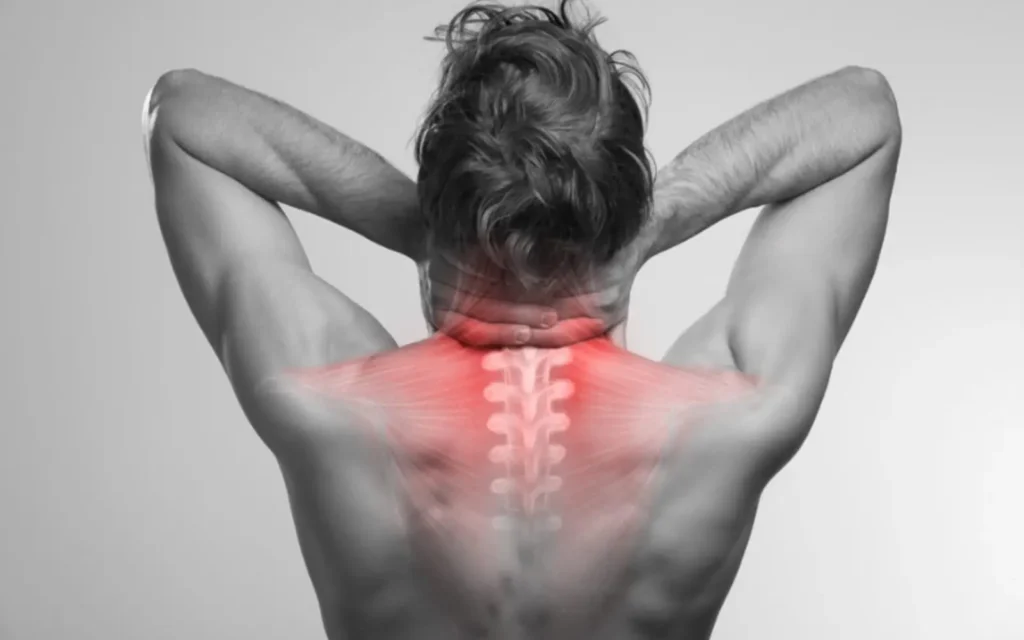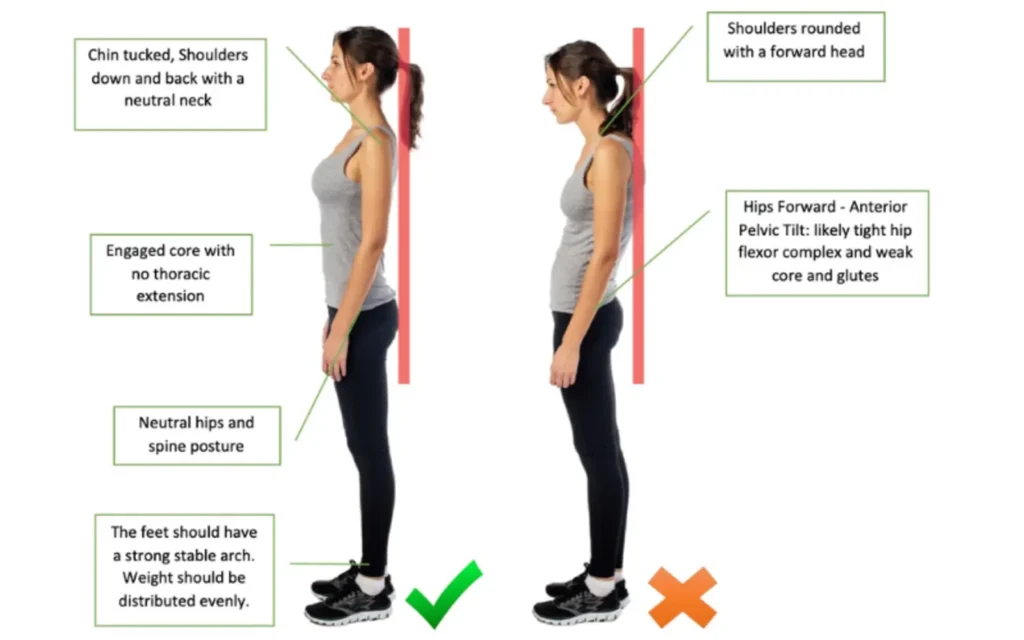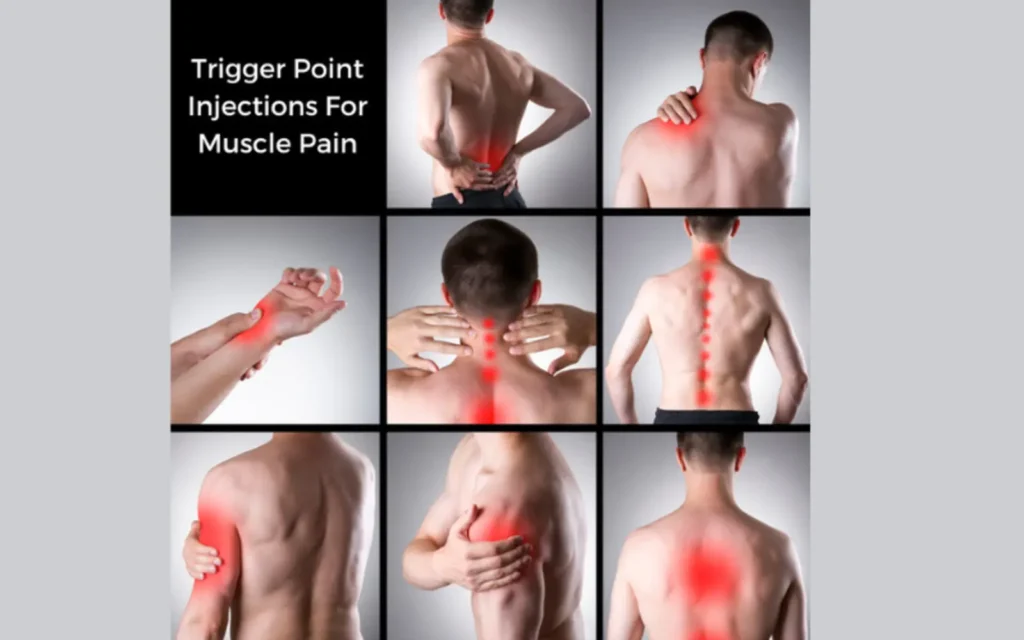Neck pain can come from muscles or discs. Understanding the difference is key.
Muscle pain is often due to strain, while disc pain may involve nerve issues. Neck pain affects many people at some point in their lives. Knowing if it’s from muscles or discs helps in getting the right treatment. Muscle pain usually results from overuse or poor posture.
Disc pain can be more severe, often involving tingling or numbness. This distinction is crucial for effective pain management. In this guide, we will explore how to identify the source of your neck pain. Understanding these signs can lead you to better care and relief. Stay with us to learn how to pinpoint the cause of your discomfort.

Common Causes Of Neck Pain
Neck pain can be a real nuisance. Understanding whether your pain stems from a muscle strain or a disc issue is crucial for proper treatment. Both conditions have different causes and symptoms. Knowing the common causes can help you determine the right course of action.
Muscle Strain
Muscle strain in the neck is a common issue. It often occurs due to overuse or sudden movements. Here are some of the usual causes:
- Poor Posture: Sitting or standing incorrectly can strain neck muscles.
- Repetitive Movements: Activities like typing or looking down at a smartphone.
- Stress: Emotional stress can cause muscle tension.
- Sleeping Position: Sleeping in an awkward position can strain neck muscles.
Muscle strain symptoms include:
- Dull or aching pain.
- Stiffness and limited movement.
- Muscle spasms.
Muscle strain is generally less severe than disc issues. It can often be treated with rest, ice, and over-the-counter pain relievers. Physical therapy and exercises can also help strengthen neck muscles and improve posture.
Disc Issues
Disc issues in the neck, such as herniated or bulging discs, are more serious. These problems occur when the discs between the vertebrae become damaged. Common causes include:
- Aging: Discs naturally degenerate over time.
- Injury: Trauma from accidents can damage discs.
- Wear and Tear: Repetitive stress on the spine.
Disc issues symptoms include:
- Sharp or burning pain.
- Pain radiating to shoulders or arms.
- Numbness or tingling in the arms or hands.
- Weakness in the arms.
Disc problems often require more intensive treatment. This may include physical therapy, medications, or even surgery. If you experience severe symptoms, consult a healthcare professional immediately.
Symptoms Of Muscle Pain
Neck pain can stem from various causes, but identifying whether it’s muscle-related or due to a disc issue is crucial for effective treatment. Muscle pain in the neck often presents specific symptoms that can help distinguish it from disc-related pain. Understanding these symptoms can guide you towards the right diagnosis and treatment. Let’s explore some common symptoms of muscle pain in the neck.

Localized Tenderness
One of the hallmark signs of muscle pain in the neck is localized tenderness. This means that the pain is concentrated in a specific area rather than spreading out. If you press on the sore spot, you might feel a sharp or aching pain. This is usually a sign of a muscle strain or tension.
Here are some common characteristics of localized tenderness:
- Specific Area: The pain is focused on one spot, often where the muscle is strained or knotted.
- Pain on Touch: Pressing on the tender area can cause noticeable discomfort.
- Muscle Knots: You may feel small, hard lumps, known as trigger points, within the muscle.
Localized tenderness can be easily identified by a physical examination. A doctor or physiotherapist may feel the neck muscles to locate the tender spots. They might use techniques like myofascial release or massage to relieve the tension in these areas.
Stiffness
Another common symptom of muscle pain in the neck is stiffness. This can make it difficult to move your neck freely. You might notice that turning your head from side to side or looking up and down becomes challenging and painful.
Typical signs of stiffness include:
- Reduced Range of Motion: Difficulty in moving the neck in various directions.
- Feeling Tight: The muscles may feel tight or rigid.
- Pain with Movement: Movements like turning the head can cause pain.
Stiffness can result from prolonged periods of poor posture, such as sitting at a computer for long hours. Stretching exercises and ergonomic adjustments can help alleviate stiffness. Regularly changing your position and taking breaks to stretch can also be beneficial.
In some cases, a warm compress or a hot shower can help relax the stiff muscles, providing temporary relief. Gentle neck exercises and physical therapy may also be recommended to improve flexibility and reduce stiffness.
Symptoms Of Disc Problems
Neck pain can be tricky to diagnose. It might come from muscle strain or disc problems. Understanding the symptoms can help you identify the cause. Let’s look at the symptoms of disc problems.
Radiating Pain
Radiating pain is a key symptom of disc problems. This pain starts in the neck and travels down the arm. It happens because the disc presses on a nerve.
Here are some common signs of radiating pain:
- Sharp or burning pain
- Pain that worsens with certain movements
- Pain that spreads to the shoulder, arm, or even fingers
This type of pain is different from muscle pain. Muscle pain usually stays in one place. Radiating pain moves along the nerve’s path.
Consider the following table to see the differences between muscle pain and radiating pain:
|
Muscle Pain |
Radiating Pain |
|
Localized |
Travels down arm |
|
Dull or aching |
Sharp or burning |
|
Improves with rest |
May not improve with rest |
Numbness And Tingling
Numbness and tingling are also signs of disc problems. This happens when the disc pinches a nerve. You might feel these sensations in the arm or hand.
Common areas for numbness and tingling include:
- Shoulder
- Upper arm
- Forearm
- Fingers
Numbness can make your arm feel weak. Tingling feels like “pins and needles.” These sensations are not typical of muscle pain.
Review the table below to understand the differences between numbness and muscle pain:
|
Numbness and Tingling |
Muscle Pain |
|
Often in the arm or hand |
Usually in the neck or shoulder |
|
“Pins and needles” feeling |
Aching or sore feeling |
|
Can affect grip strength |
Does not affect grip strength |

Physical Activities Impact
Neck pain can be confusing and concerning. Often, it’s tough to know whether the pain stems from muscles or a disc problem. Physical activities play a significant role in identifying the source of the pain. Understanding how these activities impact your neck can help you determine the root cause and seek appropriate treatment.
Repetitive Movements
Repetitive movements often strain the neck muscles. Daily activities like typing, looking at your phone, or even certain sports can cause muscle-related neck pain. When muscles are overused, they become tight and sore. Here are some signs that repetitive movements might be causing your neck pain:
- Localized pain: The pain is often concentrated in a specific area.
- Muscle stiffness: Your neck feels stiff and hard to move.
- Relief with rest: The pain eases when you take breaks from the activity.
A simple test can help determine if the pain is muscle-related. Gently massage the sore area. If the pain decreases, it’s likely due to muscle strain. Regular stretching and strengthening exercises can alleviate this type of pain.
|
Activity |
Effect on Neck |
|
Typing |
Muscle strain from poor posture |
|
Phone use |
Muscle tension from looking down |
|
Swimming |
Overuse of neck muscles |
Injury
Injuries can also cause neck pain, often linked to issues with discs rather than muscles. A disc injury involves the cushions between the vertebrae in your neck. This type of pain usually results from a specific incident such as an accident or sudden movement. Signs that an injury might be causing your neck pain include:
- Radiating pain: Pain spreads to your shoulders or arms.
- Numbness or tingling: You feel numbness or tingling in your arms or hands.
- Persistent pain: The pain does not go away with rest or massage.
If you suspect a disc injury, it’s crucial to seek medical advice. A healthcare professional can perform tests like an MRI to confirm the diagnosis. Treatment might involve physical therapy, medication, or in severe cases, surgery.
Here are some common causes of neck injuries:
- Car accidents
- Falls
- Sports injuries
- Sudden movements
Recognizing the source of your neck pain is the first step towards effective treatment. Whether the pain is muscle-related or due to a disc injury, addressing it promptly can prevent further complications and improve your quality of life.
Posture And Neck Pain
Introduction paragraph about How to Tell If Neck Pain is Muscle Or Disc? and Posture and Neck Pain…
Neck pain can be a real nuisance, affecting daily activities and overall well-being. Understanding whether your neck pain is due to muscle strain or a disc issue is crucial. One important factor that often contributes to neck pain is posture. In this section, we will explore how posture affects neck pain and what you can do to alleviate it.
Poor Posture Effects
Poor posture can lead to significant neck pain. When you slouch or hunch over, your neck muscles have to work harder to support your head. This extra strain can cause muscle fatigue and pain. Here are some common effects of poor posture:
- Muscle Strain: Constantly looking down at your phone or slouching can overstretch and strain neck muscles.
- Spinal Misalignment: Poor posture can lead to misalignment of the cervical spine, causing disc issues.
- Headaches: Tension in the neck muscles can cause headaches, often mistaken for other types of headaches.
- Reduced Flexibility: Poor posture can limit the range of motion in your neck, making it stiff and painful.
Over time, these effects can worsen, leading to chronic neck pain. It’s essential to be aware of your posture and make adjustments to prevent further damage.
Ergonomic Solutions
Improving your posture can significantly reduce neck pain. Ergonomic solutions can help you maintain a neutral spine and reduce strain on your neck. Here are some effective ergonomic tips:
- Adjust Your Workspace: Ensure your computer screen is at eye level. Use a chair that supports your lower back.
- Take Breaks: Stand up and stretch every 30 minutes to prevent muscle fatigue.
- Use Proper Devices: Use a headset for phone calls instead of cradling the phone between your shoulder and ear.
- Sleep Right: Use a pillow that keeps your neck in a neutral position. Avoid sleeping on your stomach.
Implementing these ergonomic solutions can lead to significant improvements in neck pain. Paying attention to your posture throughout the day is a simple yet effective way to maintain neck health.

Diagnostic Tests
Neck pain can be caused by various factors, including muscle strain or disc issues. Determining the exact cause of neck pain is crucial for effective treatment. Diagnostic tests help identify whether the pain originates from muscles or discs. Below are some common diagnostic tests used by healthcare professionals.
Physical Examination
A physical examination is often the first step in diagnosing neck pain. During this examination, the doctor will assess your neck’s range of motion, strength, and reflexes. They will ask about your medical history and any recent activities that might have caused the pain.
The doctor may perform several physical tests, including:
- Palpation: The doctor will feel around your neck and shoulders to identify tender spots.
- Range of Motion Test: You will be asked to move your head in different directions to see how well you can move your neck.
- Strength Test: The doctor will test the strength of your neck and shoulder muscles.
- Reflex Test: This involves tapping on specific areas to check your reflexes, which can indicate nerve issues.
These tests help the doctor identify whether the pain is muscular or related to the discs. If muscle strain is suspected, you may experience pain when the muscles are touched or moved. If a disc issue is suspected, the pain may be more constant and severe, often radiating to other areas like the arms.
Imaging Techniques
If the physical examination does not provide enough information, imaging techniques are used. These techniques give a detailed view of the neck’s internal structures. Common imaging techniques include:
- X-rays: X-rays show the alignment of the bones in your neck. They can help identify bone spurs or narrowing of the spaces between the discs.
- MRI (Magnetic Resonance Imaging): An MRI provides detailed images of soft tissues, including muscles, discs, and nerves. It is useful for identifying herniated discs or other soft tissue problems.
- CT Scan (Computed Tomography): A CT scan offers a more detailed view than X-rays. It is often used to identify issues with bones and joints.
- Electromyography (EMG): EMG measures the electrical activity of muscles. It can help identify nerve damage that might be causing neck pain.
These imaging techniques help pinpoint the exact cause of neck pain. For example, an MRI can reveal a herniated disc pressing on a nerve, while an X-ray can show bone spurs that might be causing discomfort. Accurate diagnosis is essential for effective treatment, whether it involves physical therapy, medication, or surgery.
Treatment Options For Muscle Pain
Neck pain can stem from various sources, such as muscle strain or disc issues. Identifying the cause is crucial for effective treatment. If the pain is muscle-related, there are several treatment options available to alleviate discomfort and promote healing. This section explores two primary methods: Rest and Ice, and Physical Therapy.
Rest And Ice
Rest and ice are essential first steps in treating muscle pain. When muscles are strained or overworked, they need time to heal. Rest helps in reducing inflammation and preventing further injury.
- Rest: Avoid activities that strain the neck muscles.
- Ice: Apply ice packs to the affected area for 15-20 minutes, several times a day.
Here is a simple table summarizing the benefits of rest and ice:
|
Rest |
Ice |
|
Reduces strain |
Minimizes swelling |
|
Prevents further injury |
Alleviates pain |
|
Promotes healing |
Reduces inflammation |
Combining rest and ice can effectively reduce muscle pain. Remember, overusing the neck muscles can prolong recovery. Take short breaks throughout the day to rest your neck. Stay consistent with ice therapy for the best results.
Physical Therapy
Physical therapy is another effective treatment option for muscle pain. A physical therapist can design a personalized program to strengthen neck muscles and improve flexibility.
Some common physical therapy techniques include:
- Stretching exercises: Improve flexibility and reduce stiffness.
- Strengthening exercises: Build muscle strength to support the neck.
- Manual therapy: Hands-on techniques to reduce pain and improve mobility.
- Posture education: Teach proper posture to avoid future strain.
Below is a breakdown of these techniques and their benefits:
|
Technique |
Benefits |
|
Stretching exercises |
Reduce stiffness, improve flexibility |
|
Strengthening exercises |
Support neck, prevent future pain |
|
Manual therapy |
Alleviate pain, enhance mobility |
|
Posture education |
Prevent future strain |
Incorporating physical therapy into your routine can lead to long-term relief. It helps in not only treating current pain but also preventing future occurrences. Consult a professional to get a tailored plan that suits your needs.

Treatment Options For Disc Issues
Distinguishing between muscle pain and disc pain in the neck can be tricky. When it comes to disc issues, there are several treatment options available to alleviate the discomfort and improve your quality of life. Understanding these options will help you make informed decisions about your health.
Medication
Medications are often the first line of treatment for disc-related neck pain. They can help reduce inflammation, alleviate pain, and improve mobility. Here are some common medications used:
- Nonsteroidal Anti-Inflammatory Drugs (NSAIDs): These medications, such as ibuprofen and naproxen, reduce inflammation and pain.
- Analgesics: Pain relievers like acetaminophen can help manage mild to moderate pain.
- Muscle Relaxants: These can relieve muscle spasms and reduce pain.
- Oral Steroids: Prescribed for severe inflammation, steroids can provide significant relief.
- Topical Medications: Creams or gels applied directly to the neck can provide localized pain relief.
Doctors may also prescribe stronger medications for severe pain. It is essential to follow your doctor’s advice and dosage instructions to avoid side effects and dependency.
Surgery Considerations
Surgery is considered when conservative treatments fail to relieve pain or if there is significant nerve compression. Here are some surgical options for disc issues:
- Discectomy: Removal of the herniated portion of the disc to relieve nerve pressure.
- Laminectomy: Removal of part of the vertebra to create more space for the nerves.
- Spinal Fusion: Fusing two or more vertebrae together to stabilize the spine.
- Artificial Disc Replacement: Replacing the damaged disc with an artificial one to maintain spine mobility.
Each surgical option has its benefits and risks. Discussing with a spine specialist can help determine the best approach for your specific condition. Recovery time and post-surgery care are also crucial factors to consider.
In summary, understanding the treatment options available for disc issues can help you make informed decisions about your health and well-being.
When To See A Doctor
Neck pain can be troubling. It’s often hard to tell if it’s a muscle issue or a disc problem. Understanding when to see a doctor is crucial. This section will help you identify the signs that indicate it’s time to seek medical help.
Persistent Symptoms
It’s normal for neck pain to last a few days. But persistent symptoms can signal something serious.
Here are some signs to watch for:
- Pain lasting more than a week
- Frequent headaches
- Stiffness that doesn’t go away
- Difficulty moving your neck
- Numbness or tingling in your arms
These symptoms may suggest a problem with your neck discs. Discs can herniate, causing nerve pressure. This requires medical attention.
Muscle pain, on the other hand, often improves with rest. If it doesn’t, it’s time to see a doctor.
|
Symptom |
Possible Cause |
|
Pain lasting over a week |
Disc problem |
|
Frequent headaches |
Disc or muscle issue |
|
Stiffness |
Muscle strain |
|
Numbness |
Herniated disc |
Always pay attention to your body. Persistent symptoms are a sign that something isn’t right. Don’t ignore them.
Severe Pain
Severe pain is another clear indicator that you should see a doctor. This type of pain can interrupt your daily life.
Consider the following:
- Pain that makes it hard to sleep
- Pain that limits your daily activities
- Pain that radiates to your shoulders or arms
- Pain that gets worse over time
Severe pain often points to a disc problem. Discs can bulge or rupture, causing intense pain. This pain can spread to other areas, complicating simple tasks.
Muscle pain is usually less intense. It may feel like a constant ache. Severe muscle pain, though, can still be a sign of a serious issue.
Here’s a quick comparison:
|
Type of Pain |
Possible Cause |
|
Severe, radiating pain |
Herniated disc |
|
Constant, dull ache |
Muscle strain |
Severe pain should never be ignored. It can signify a deeper issue that needs prompt medical attention.
Preventive Measures
Neck pain can be frustrating and debilitating. Identifying whether it’s due to muscle strain or a disc issue is crucial for proper treatment. Prevention is always better than cure. Understanding preventive measures can help you avoid severe neck pain and maintain a healthy lifestyle.
Exercise And Stretching
Regular exercise and stretching are essential to prevent neck pain. They help strengthen muscles and improve flexibility, reducing the risk of injuries. Here are some effective exercises and stretches:
- Neck Tilts: Sit or stand up straight. Slowly tilt your head towards one shoulder, hold for 10 seconds, then switch sides. Repeat 5 times on each side.
- Chin Tucks: Sit or stand up straight. Gently tuck your chin in towards your chest, hold for 5 seconds, then release. Repeat 10 times.
- Shoulder Shrugs: Raise your shoulders towards your ears, hold for 5 seconds, then relax. Repeat 10 times.
- Neck Rotations: Sit or stand up straight. Slowly turn your head to one side, hold for 10 seconds, then switch sides. Repeat 5 times on each side.
Incorporating these exercises into your daily routine can significantly reduce neck pain. Consistency is key. Aim for at least 10-15 minutes of neck exercises daily. Gradually increase the intensity and duration as your strength improves.
|
Exercise |
Repetitions |
Hold Time |
|
Neck Tilts |
5 each side |
10 seconds |
|
Chin Tucks |
10 |
5 seconds |
|
Shoulder Shrugs |
10 |
5 seconds |
|
Neck Rotations |
5 each side |
10 seconds |
Ergonomic Practices
Adopting ergonomic practices in your daily life can also help prevent neck pain. Proper posture and workstation setup play a significant role in maintaining neck health. Here are some tips:
- Monitor Height: Ensure your computer monitor is at eye level to avoid straining your neck.
- Chair Support: Use a chair with good lumbar support. Adjust the chair height so your feet are flat on the floor.
- Keyboard and Mouse: Position your keyboard and mouse close to you. Keep your elbows at a 90-degree angle.
- Frequent Breaks: Take short breaks every 30 minutes to stretch and move around.
- Phone Usage: Avoid cradling your phone between your ear and shoulder. Use a headset or speakerphone.
These ergonomic practices can make a significant difference in preventing neck pain. Awareness and small adjustments in your daily routine can lead to a healthier neck.
|
Ergonomic Tip |
Benefit |
|
Monitor Height |
Reduces neck strain |
|
Chair Support |
Improves posture |
|
Keyboard and Mouse Position |
Prevents shoulder pain |
|
Frequent Breaks |
Reduces muscle tension |
|
Phone Usage |
Prevents neck tilt |
Frequently Asked Questions
How Can I Tell If Neck Pain Is Muscle Related?
Muscle-related neck pain often feels like a dull ache. It may improve with rest and gentle stretching.
What Are The Signs Of A Herniated Disc In The Neck?
A herniated disc may cause sharp pain, numbness, or tingling in the arms. It often worsens with movement.
Can Neck Pain From A Disc Problem Affect My Arm?
Yes, disc-related neck pain can radiate down the arm. This may cause weakness, tingling, or numbness.
Conclusion
Identifying the source of neck pain is crucial for proper treatment. Muscle pain often involves stiffness and soreness. Disc problems may cause sharp, radiating pain. Consult a doctor for an accurate diagnosis. They can recommend the best course of action.
Proper care and timely intervention can prevent further issues. Remember, your health is important. Don’t ignore persistent neck pain. Seek medical advice to ensure the right treatment and relief.

